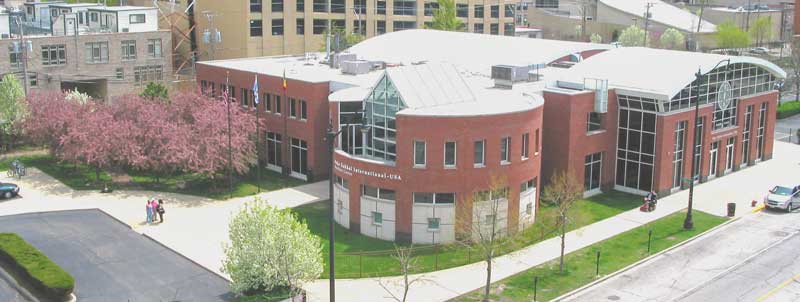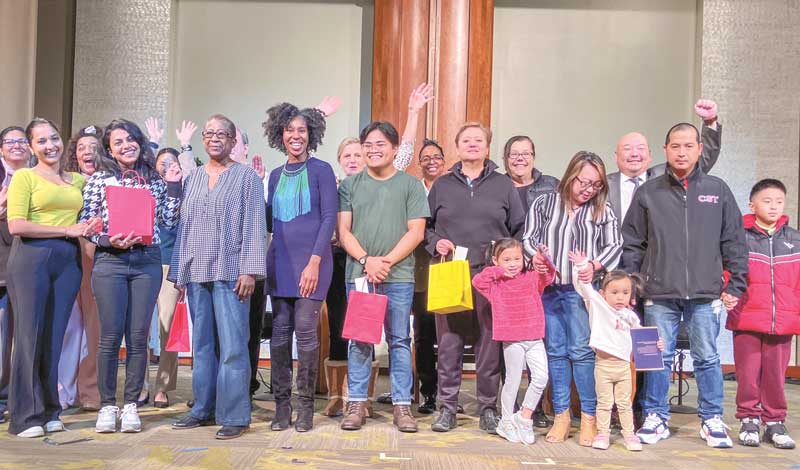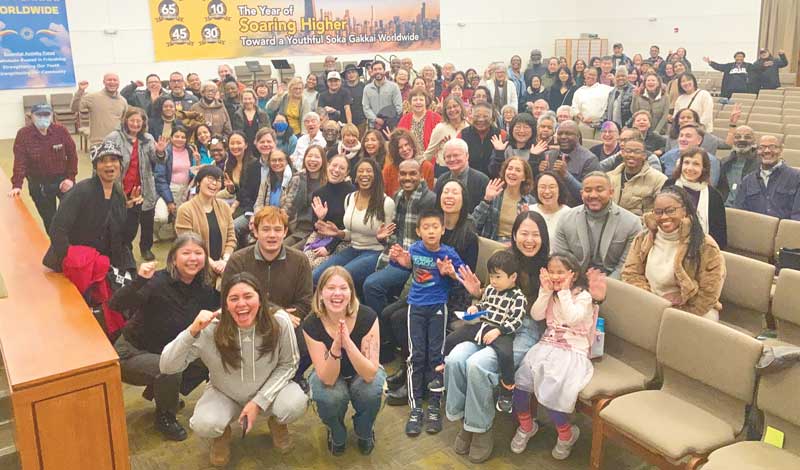by Chicago Zone team
Tell us briefly about your zone’s history. Chicago Zone was formed on July 21, 2007, when Central Territory was first established. While our name is Chicago Zone, we encompass four states and span two time zones. Our zone includes almost all of Illinois and Wisconsin as well as northwest Indiana and both the western Upper Peninsula and parts of southern Michigan. While a single neighborhood in Chicago may offer several meeting places that are within walking distance for the members who live there, it is also common for members to drive more than three hours to attend a single activity in our frontier areas. Chicago Zone includes world-class cities, rapidly expanding suburban areas, vast farmlands and cozy small towns. We can be thought of as a microcosm of the United States, and the advancement of kosen-rufu here has a decisive impact on the nation and the world.

Do you have a Buddhist Center in your zone? We have the beautiful SGI-USA Chicago Culture Center.
Does your zone have a particular point of pride? Ikeda Sensei visited our zone in 1960, 1975, 1980 and 1981. These visits are documented in the Mentor Disciple Hall in the Chicago Culture Center and described in The New Human Revolution. The generations who have been born after these visits, including those now in the youth division, have pride in their mission to actualize Sensei’s vision for kosen-rufu in America.
Other points of pride involve the development and growth of our youth division:
• The number of Byakuren, Soka Group and Gajokai members is steadily surpassing the participation levels of previous years.[1]
• We were No. 1 in the territory in the number of youth taking and passing the Ikeda Wisdom Academy exam in February 2025.
• This past June saw a nearly 30% increase in youth discussion meeting participation (including youth guests) from June of 2024.
• A trophy was awarded to our youth division band participating in the 2025 Juneteenth parade in Milwaukee.
What is essential for you as a zone? Many Chicago Zone members would agree that the vow that Sensei made in 1960 to the young African American boy who had just suffered racial abuse in Lincoln Park is both our prime point and shared struggle: “As he thought of this young boy’s future, he vowed in his heart, ‘I promise you that I will build a society truly worthy of your love and pride’” (Oct. 2, 2020, World Tribune, p. 36).

Do you have something that is unique to your zone? Our unique features include:
• Daisaku Ikeda Way: The honorary street runs the length of the streets in front of the Chicago Culture Center. The naming occurred on the eve of Jan. 26, 2015, the 40th anniversary of the SGI’s founding. It also made history as the first street in the U.S. to bear Sensei’s name.
• The Peace and Justice Monument sculpture, which commemorates the events in Lincoln Park during Sensei’s October 1960 visit, stands in a prominent area of the park and is seen by thousands of people every year. (A replica stands in the atrium of our culture center).
• Chicago is home to the DePaul University Institute for Daisaku Ikeda Studies in Education, which is a research center dedicated to studying the philosophies of Daisaku Ikeda, Josei Toda and Tsunesaburo Makiguchi, with a focus on their educational theories.
What’s your vision toward 2030? The realization of Sensei’s vision to create a world truly worthy of the love and pride of all future generations. The core of making this vision a reality will be the exponential growth of our youth division membership by Jan. 2, 2028.
August 1, 2025 World Tribune, p. 10
References
- Byakuren, Soka Group and Gajokai are behind-the-scenes training groups created by Ikeda Sensei to foster young people into leaders who possess both the spirit and ability to serve humanity. ↩︎
You are reading {{ meterCount }} of {{ meterMax }} free premium articles

